Road Signs in Kenya and Their Meaning
You have probably spotted many road signs in Kenya either while you drive or on foot. But the question is: do you know the meaning of all the road signs or even a handful of them? Whether a driver or a pedestrian, understanding the road signs in our Kenyan roads and their meaning is a crucial, safety practice.
Rules and regulations govern Kenyan roads so that order is observed on all roads at any given specific time. The rules and regulations that are applicable on Kenyan roads are derived from international regional and the Kenyan constitution. The government of Kenya and all users of these roads expect everyone to abide by the rules is the first step in safeguarding your life and the lives of other road users while on the road.
Whether you call them road signs or traffic signs you should understand that they are meant to give instructions to all road users and at all times one should observe these rules for the benefit of oneself and the benefit of other road users.
Kenyan road signs or Kenya traffic signs rules and regulations can be found in the following documents:
- The Traffic Act.
- The Highway Code.
The Kenya Traffic Act
Kenya Traffic Act has laws that usually govern how everyone should use the roads and the expected behavior which every road user should abide by. The act has penalties and fines which are applicable for those who do not follow the laws stipulated under the Kenyan Traffic Act.
Highway Code
What you hear as the Kenyan Highway Code is information, guides, advice, and the must-be-followed rules by all road users in Kenya. It comprises guidelines on pedestrians, motorcyclists, cyclists, and animals. Its main mandate is to enforce safety and ensure every road user in Kenya adheres to the set rules.
Whether you own a bicycle, motorcycle, vehicle, or an animal cart you have to learn the rules so that you can be a better responsible road user.
Traffic Signs and Signals
You might be wondering what’s the use of traffic signs and other signals. Well in Kenya, these signs and signals are used to communicate on the road.
We have two types of traffic signals in Kenya: light signals and hand signals.
These traffic signs are a source of information and some guidance, and they are a source of warning to all road users. Be keen to study them and learn.
Road signs in Kenya are categorized into several broad categories, including:
- Mandatory/regulatory signs.
- Warning signs.
- Traffic signs.
- Informative signs.
- Guidance signs.
(a) Regulatory Signs (Class A)
Category A signs are mandatory signs — drivers must follow the signs. Mostly, they have a circular shape matched with a white or blue background.
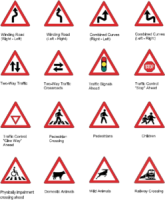
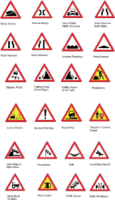

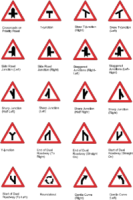
















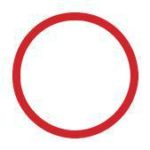
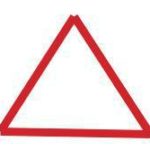
Secondary Message Signs for use with Regulatory Signs
(b) Warning Signs (Class B)
Mostly triangular, this category of road signs warns Kenyan road users to take caution when driving to avoid particular dangers.
Some road signs in Kenya that fall into this category include:
- Speed bump.
- Blindspot.
- Traffic signal ahead.
- Riverbank with no barrier ahead.
- The road narrows from the right ahead.
- Sharp junction.
- End of Dual roadway.
- Y-junction.
- Side road junction
- Gentle curve
- Sharp curve.














(C) Traffic Light (Class C)
In the Traffic Act, traffic lights fall in Class C signs. Traffic lights control the traffic flow of vehicles and pedestrians at particular points like roundabouts, intersections, and pedestrian crossings.
Kenya uses three different colors, all of which convey a specific meaning. The traffic lights alternate using a 4-step sequence.
RED — RED means STOP. When the light turns RED, it means you should stop. Wait until the light turns green for you to go/cross the stop line.
RED and AMBER, lit together — When the RED light lights up together with the Amber light, it signals to the driver to get ready for the GREEN light. The driver should not cross the line as RED still signals to the driver to STOP; not to cross the stop line until both RED and AMBER turn off.
GREEN — GREEN means you may go on if the road is clear.
AMBER — AMBER means STOP at the line and it follows the GREEN light. This light signals the driver
to stop at the stop line. The RED light follows the RED light. 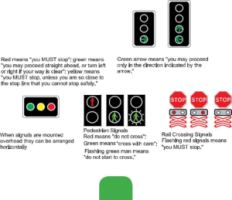
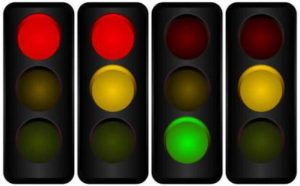
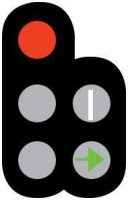
A GREEN arrow may be provided in addition to the full green signal if movement in a certain direction is allowed before or after the full green light phase.
If the way is clear you may go, but only in the direction shown
Traffic Signal Blackout
If traffic signal lights are not working because of an electrical power failure:
- Stop at the intersection
- Proceed when you know other turning and approaching vehicles, bicycles, or pedestrians have stopped.
(d) Information Signs
Informative signs tell motorists about convenient services and directions along the road. These signs direct drivers to services hospitals, hotels, restaurants, petrol stations, parking spaces, and so on. Compared to Mandatory signs or Warnings signs, they are less demanding. Regardless, it is critical to understand their meaning.













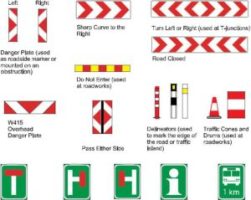
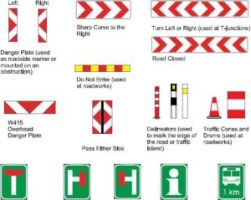
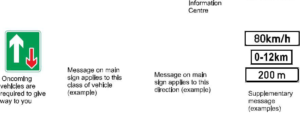
| No through | No through | No through |
| road on ahead | road on right | road on left |
 |
(e) Guidance Signs
Guidance signs are yet another category of road signs in Kenya. These signs direct drivers on what directions to follow.



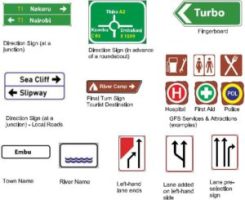
Traffic Signals
Road Signs in Kenya: Communicating on The Road
In Kenya today, you will find Kenyan drivers or Kenyan road users communicating with each other with a prescribed set of signs and signals. Such communication methods aid in eliminating confusion and avoiding misunderstanding while on the road. Examples include hand gestures, signal lights, and responding to directives from Kenya traffic marshalls and Kenya police.
It’s recommended that every road user who owns a car follow the following techniques:
MSM /PSL technique (Mirror, Signal and Manoeuvre)
For those who are unaware of what MSM technique is one of the fundamental techniques, every road user should apply for safe driving. It helps every Kenyan driver to communicate effectively on the road with other Kenyan drivers.
When Should The MSM Technique be used or where is the MSM Technique Applicable?:
1. Before you make that decision of moving off
2.It’s always a must before signaling
3. Before you decide to change your direction whether you are turning left or right, whether you are overtaking other vehicles or any other road user including cyclists,s or before you change lanes.
4. Before you decide to step on the acceleration pedal what I mean is before any change of speed occurs. This is inclusive of increasing one speed when another vehicle is trying to overtake you, but the most important part is when you are about to slow down when you come to traffic or you are about to park up.
In Summary, always use the MSM when:
- Moving off
- Signaling
- Changing direction
- Turning left or right
- Overtaking
- Changing lanes
- Slowing down or stopping.
Mirror
Your vehicle has three sets of mirrors which you should concern yourself with at all times.
Center mirror – the center mirror usually is applicable when you want to know whether the vehicle behind you is very close to you. This is a very useful mirror since its assists you to signal in time and alert the other road user you are about to take an action and hence they should slow down and keep some distance to enable you to conveniently execute your action.
Right mirror – The right mirror is used to show you if anything is overtaking you. If you have decided to move on the right you have to check whether it is safe using this right-hand side mirror before you signal.
Left mirror – The left mirror is applicable in the same manner the right side mirror is. In most Kenyan roads you might find someone overtaking you from the left in case the road is wide enough or the cyclists is about to pass you using the left-hand side, so if you’re planning to move on the left side you must always without fail check on the left mirror before signaling.
So keep in mind that you should always check the mirrors by focusing first on the center interior mirror, then look at the right door mirror and the left door mirror in regards to the direction you are about to go.
Make it a habit of using the mirror.
There is one key observation most drivers fail to observe when they look at the mirror which is what is in the mirrors. Actual hazards occur when a driver fails to assess the speed at which the other vehicle or the other road user might be in, how far are they from them, and exactly what type of vehicle do they have. To get the ideal answer for your assessment as a driver always use the other mirrors since they can give you a better answer to your problem.
You do also remember that everything on the road is not constant and it doesn’t have to be according to plan. Their situations whereby you need to stop or slow down and hence some special actions are applicable in such cases. A vehicle may be driving too close to you so what you need to do is gently slow down much earlier than expected so that the driver behind you will have ample time to react that is slow down as well. There are other cases where the driver behind you is coming too fast and approaching you at top speed what you need to do is slow down lightly later than normal so you can be able to give the other road user time to slow down and while at a safe stopping distance.
On Kenyan roads, we all know what the habit is especially with cyclists and motorcyclists. They always tend to push forward while vehicles have slowed down somewhere so that they can be in front of the queue. When such habits are hard to die, you must always use the mirrors to establish where these road users are and don’t forget to check on the blind spot which is always the case after you check on the mirrors.
Key Take an Away:
Remember without fail that the blind spot should be checked before changing direction when:
- There is a presence of cyclists or motorcyclists who are close by.
- You are planning to overtake on a dual carriageway or motorway
- Do you want to change lanes
- You want to change direction or lanes when any potential hazard may be obscured by the blind spot.
Signals
So when do you decide or decide that signal is necessary? You should remember that Kenyan traffic signs signal to tell all the road users what to do or rather the action to take. The same is applicable here, you signal to alert other road users of your intentions to do an action. When you find out that there are no other road users who are present on the road you don’t have to signal but always check and counter check before making the decision not to signal. When you are in a situation that you need to take action and there are other road users you must always signal to keep everyone alert just like the Kenyan traffic signs.
Remember that signals are usually applied to the direction one is about to take or action.
Signals depend basically on exactly what you view on the mirrors so the mirrors should always be the key as they are the traffic signs of your vehicle.
When you need to change directions use Indicators
Brake Lights
if you need to stop or slow down and the driver behind you is either too close or coming too fast what you need to do is gently touch on the brake pedal and the brake lights will light which is a good signal that you are either about to stop or slow down. The other driver usually has time to slow down just before you completely slow down.
Road Position
this is one good position that you can see further and assess what is happening ahead of you. When overtaking a stationary vehicle or any other stationary object, if you pull out in time you will have allowed other road users to view the hazard themselves in time. So when you go around the hazard the other drivers need to see your intentions so signaling is a must.
Always signal in good time since when you’re too late you may deny other road users who are behind you ample time to react to your action. So as strict as you follow the traffic signs it’s the same spirit you should in applying signals in time. Signaling too early on the other hand may make the other road users make bad decisions since they may think you intend to take an action sooner which might bring in some confusion.
NOTE: if you fail to signal after the mirrors then the mirror sequence must be repeated again before you signal since the circumstances might have changed.
Manoeuvre
Manoeuvre is divided into three phases:
Position – always your car should be in an appropriate position while on the road. The position which your vehicle is in will be specific to the maneuver you desire to undertake. If your intentions are turning on the left side of the road then always have your vehicle in a normal road position and about 1m from the left-hand side of the road. If you intend to move on to the right side your vehicle should be close to the centerline.
Speed – when maneuvering, suitable speed should be checked and suitable gear as well if the car is manual.
Look – check on the mirrors so that you can see where you intend to go then look, assess, make a decision and take action.
Remember that the maneuver part of MSM is applicable in areas such as junctions, parking, and roundabouts, and while changing lanes among other places.
Note you can always alter the MSM if the circumstances have changed and it’s necessary.
Never forget to check on the mirrors and the blind spot
Be quick to act just in case the circumstances change instantly so be keen on the road.
Kenyan Road Signs: Signals Given by Road Users
(a) Hand signals are given by drivers
| I intend to turn to my left or I | I intend to turn to my right or I | I intend to slow down |
| intend to move out to my left | intend to move out to my right |
(b) Hand signals are given by drivers to traffic police
I intend to move left I intend to move right I intend to go on straight
(c) Light signals are given by vehicles and motorists
Sign meaning:I want to turn left I want to turn right
Sign meaning: I am applying the brakes I intend to reverse
(d) Hand signals given by motorcyclists
I intend to turn to my left/ I intend to move out to my right/ I intend to slow down
40
(e) Hand signals are given by cyclists
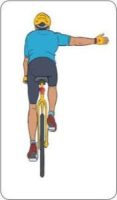
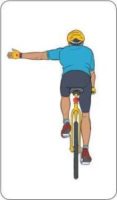
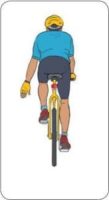
I intend to turn left/ I intend to slow down/ I intend to turn right.
(f) Hand signals given by traffic police officers
STOP, traffic approaching from behind and front
STOP, traffic
approaching from both behind and in front
Come on
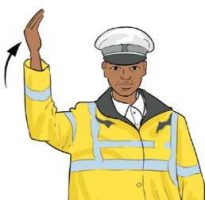
STOP, traffic
approaching from front
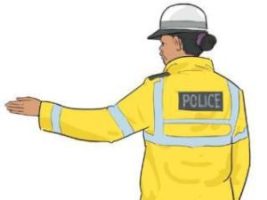
Keep coming
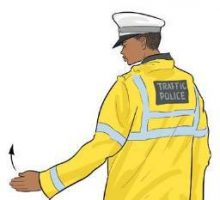
(g) Signals given by traffic marshals
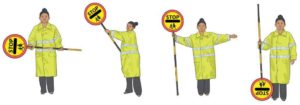
| Barrier to stop | Ready to cross | All vehicles | Not ready to |
| pedestrians | pedestrians, vehicles | must stop | cross pedestrians |
| crossing | must be prepared | ||
| to stop |
Final Thoughts on Kenyan Road Signs
It is important to memorize and understand what the different road signs in Kenya mean. As you are already aware, breaking traffic rules and not following traffic signs is a serious offence that comes with a heavy fine – see NTSA Traffic Rules and Fines.
An offense can attract a fine of up to fifty thousand or imprisonment of not less than six months.
- Always use the horn if it’s necessary as a means of warning other road users.
- Never use a horn when you’re stationary on the road
- Give right of way to vehicles such as police cars on the siren, emergency vehicles such as ambulances and fire engines if it’s on a siren or flashing its lights, The presidential motorcade or any other government official allowed to do so by the law.
- Never drive in an area meant for pedestrians and cyclists.
- Road Signs Kenya
- Traffic Signs Kenya
- Kenyan Road Signs
- Road Safety Signs
- Kenya Road Signage
- Traffic Regulations Kenya
- Road Markings Kenya
- Road Signs and Meanings Kenya
- Warning Signs Kenya
- Road Sign Symbols
- Traffic Control Signs Kenya
- Speed Limit Signs Kenya
- Regulatory Signs Kenya
- Stop Sign Kenya
- No Entry Sign Kenya
- Yield Sign Kenya
- Pedestrian Crossing Sign Kenya
- School Zone Sign Kenya
- Road Sign Colors
- Road Sign Shapes


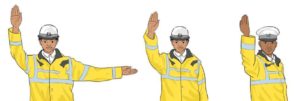

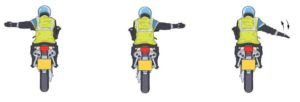



Am A driver and following your signs you put on your board but the problem is that some writing are very small and have no option to enlarge.
Please consider Those can’t read those small letters.